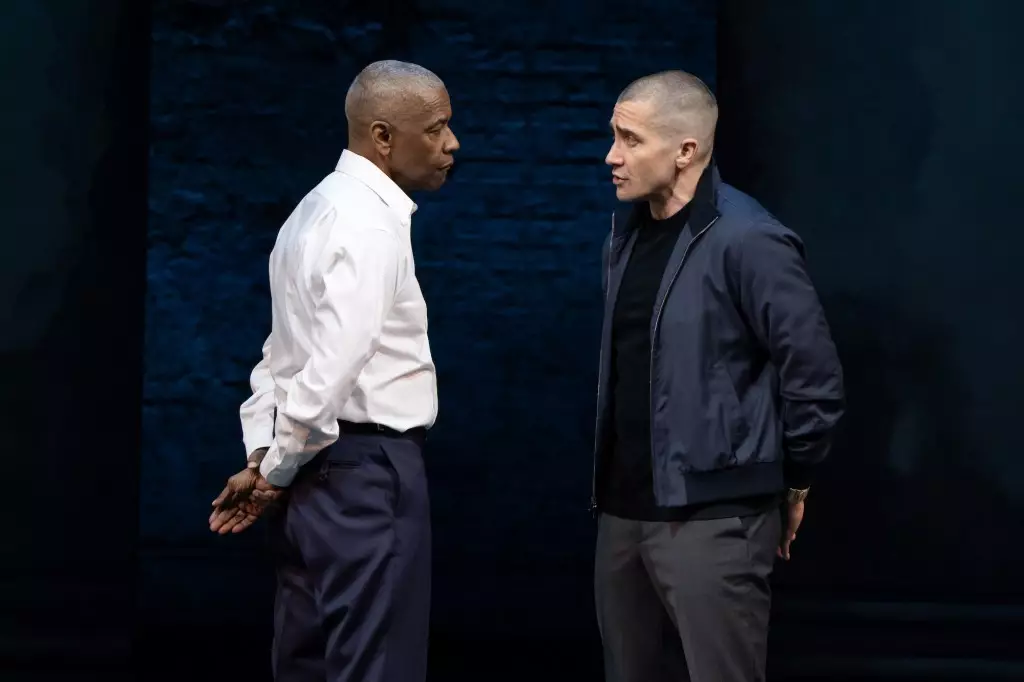In a stunning turnaround post-pandemic, Broadway has reached a significant milestone in the 2024-2025 season, achieving box office receipts that have eclipsed the pre-COVID figures from the record-breaking 2018-2019 season. With season-to-date earnings soaring to an impressive $1,801,023,860, the lights of the Great White Way are brighter than ever, signaling hope for the industry. This remarkable growth can be partially attributed to star-studded productions that have captivated audiences, such as *Good Night, And Good Luck,* featuring George Clooney, and *Othello,* showcasing the talents of Hollywood heavyweights Denzel Washington and Jake Gyllenhaal. Each of these productions has routinely surpassed the $3 million per week mark, an incredible feat that shapes the current narrative of Broadway’s revival.
However, the success of these high-profile shows illustrates a burgeoning phenomenon on Broadway—the reliance on celebrated names to drive sales and attract larger audiences. Productions like *Glengarry Glen Ross* have also showed their mettle at the box office, regularly achieving over $2 million weekly. It’s a stark reminder of the two-fold battle Broadway faces: not only are they vying for ticket sales, but they are also tasked with maintaining a diverse range of productions that can resonate beyond celebrity-driven narratives.
Challenges Looming Over This Success
Yet, the euphoria surrounding Broadway’s recovery must be tempered with realism, as noted by Jason Laks, the President of the Broadway League. In his recent comments, Laks emphasized a crucial point: the current box office boom has been massively buoyed by just a handful of dominant productions, and without them, overall performance would still lag behind pre-pandemic numbers. This statement serves as a clarion call that success must not only be measured by revenue but also by sustainability and inclusivity in production choices.
The industry is still beleaguered by numerous challenges, including spiraling costs across every aspect of production. Increasing expenses can dramatically impact the lifecycle of a show, necessitating a shorter window for productions to find their footing and secure audiences. Investors are increasingly reluctant to take risks in a fraying economic landscape, making it crucial for productions to not only attract buyers but to cultivate a steady stream of support underpinned by diverse offerings—both artistically and demographically.
The Shift in Audience Demographics
Broadway’s current momentum begs the question: are ticket prices too high? This season’s average paid admission is reportedly $128.83, inching up from $124.08 in the 2018-2019 season. While the numbers might indicate growth, they do point to a concerning trend where access to theater becomes a privilege rather than a shared cultural experience. The sector must wrestle with how to revitalize the excitement around theater while ensuring that productions aren’t simply catering to the affluent few who can afford steep prices.
Moreover, the performances that do attract audiences aren’t always reflective of a thriving artistic landscape. They often reflect the stories and experiences of a narrow segment of society. The challenge lies in fostering a diverse array of stories and voices that resonate across cultural, social, and economic divides. Broadway can no longer rest on the laurels of former glory; it must embrace transformation, pushing boundaries to engage broader audiences with relevant narratives that inspire reflection.
Sustaining Growth Amidst Industry Shifts
The reawakening of Broadway is certainly promising, but the industry must remain vigilant. Recent box office success does not guarantee long-term viability. As Laks suggests, the definitions of success cannot be stagnant. It is integral that stakeholders concentrate on deepening the work within the industry, investing in new talent, and advocating for art regardless of market pressures.
As spectators, we should celebrate the triumphs while recognizing that lasting success depends on a conscientious approach to artistic development. Broadway is more than just an economic engine; it is a cultural monument showcasing the diversity of human experience. The current climate offers an exciting opportunity for reinvention, where the old guard can blend harmoniously with a new wave of creatives who are willing to take risks, share untold stories, and make Broadway an even more vibrant cultural fabric.
It’s a pivotal moment in time—one that holds within it the potential for a bold renaissance that can ensure Broadway thrives long into the future. As the curtains rise on this new chapter, the spotlight must not only illuminate the stars but also the countless skilled storytellers and performers who deserve their moment in the limelight.


Leave a Reply